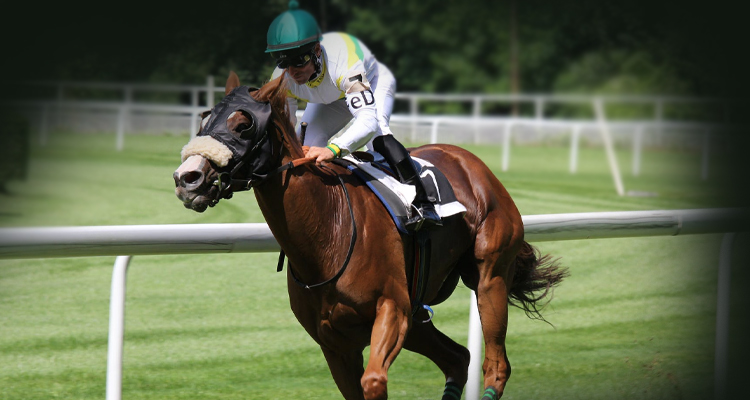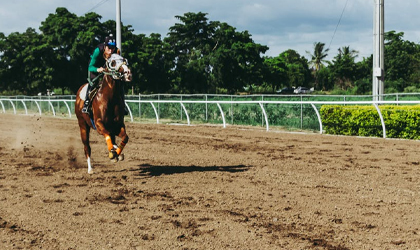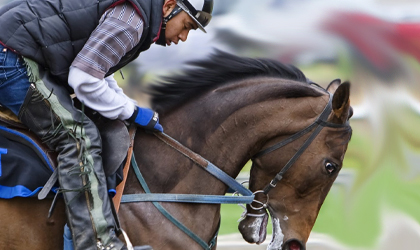Insider Betting Tips for Horse Racing

Dave Schwab 09:12 Jul 13th, 2018 Horse Racing Insider Tips , Sports Betting
You can go to any race track or turf club across the country and get any number of betting tips from the hard core bettors that frequent these establishments on a daily basis. At best you will probably come away more confused than enlightened since this is a highly opinionated crowd.
Anyone that bets horses on a regular basis has already developed their own unique betting strategy as a result of all the different ways you can handicap a particular race. That being said, there are still a couple of insider betting tips that should be a part of everyone’s strategy to have a winning day at the track.
Pick Your Races
 The typical race card at an actual race track is anywhere between 10 to 12 races, but that does not mean that you should bet on every race. The best strategy, especially for beginners is to handicap every race on that day’s card to get familiar with the process of evaluating a horse’s strengths and weaknesses. The time to jump in with an actual bet is when your confidence level with the picks you have come up with is running high.
The typical race card at an actual race track is anywhere between 10 to 12 races, but that does not mean that you should bet on every race. The best strategy, especially for beginners is to handicap every race on that day’s card to get familiar with the process of evaluating a horse’s strengths and weaknesses. The time to jump in with an actual bet is when your confidence level with the picks you have come up with is running high.
This strategy especially pertains to a turf club or off-track betting facility where you will have the opportunity to wager on multiple tracks at the same time. The best course of action in this situation is to limit your focus to one or two tracks at the most. It is very easy to get caught-up in all the excitement that horse racing brings to the table, which in turn can have a major impact on the bankroll in a very short amount of time if you start betting every race on the board.
Taking into Account Tracks Surfaces and Track Conditions
The two main track surfaces that are used for horse racing are dirt and turf. When it comes to turf tracks they are either made of natural grass or a synthetic material that resembles grass. While most horses are trained to run on one particular surface or the other, there are times where there could be some crossover, especially in major graded stakes races. This makes it very important to know a horse’s past performance on whichever surface they are running on that day.
When it comes to track conditions, horses race whether it is rain or shine so a fast track can go to sloppy in a matter of minutes if a stray storm pops up. Sometimes there can be a notable difference in a horse’s performance racing on a fast, dry track as opposed to racing on one that has been compromised due to rain or possibly even snow. A quick check into their past racing history will always note track conditions for each and every race they have run.
Dropping Down in Class
 There is a hierarchy of class when it comes to horse racing ranging from a Grade I stakes race such as the Kentucky Derby all the way down to a claiming race with a low claiming price. The top thoroughbreds in the horse racing world will work their way up in class starting as a two-year old juvenile. The average horses that run in the daily race cards at tracks all across the country tend to move up and down in class throughout their racing career.
There is a hierarchy of class when it comes to horse racing ranging from a Grade I stakes race such as the Kentucky Derby all the way down to a claiming race with a low claiming price. The top thoroughbreds in the horse racing world will work their way up in class starting as a two-year old juvenile. The average horses that run in the daily race cards at tracks all across the country tend to move up and down in class throughout their racing career.
Jumping up in class from an Allowance or Maiden Special Weight race to a Grade 3 or even Grade 2 stakes race presents a challenge to a horse, so it remains to be seen how well they will handle a much more competitive field. What you want to look for is a horse dropping down in class, especially if it is a major drop from a higher class to a much lower one. They are now competing below their ability, which enhances their chance to do well.
Study a Horse’s Recent Racing History
Your basic race horse is trained to compete and they will usually race on a regular schedule. Sometimes different factors may arise that result in an extended layoff and if that layoff lingers on past 45 days that horse is considered to be “laid off”. It is always a good idea to avoid betting on a horse coming off an extended rest as they rarely perform to their capabilities in that first race back. This is especially true at tracks with a higher class of horse racing such as Churchill, Belmont, Aqueduct and Santa Anita.
What you do want to look for is a horse that is running in their second race following a layoff. This time around they will usually perform much closer to their true ability.
On This Page



